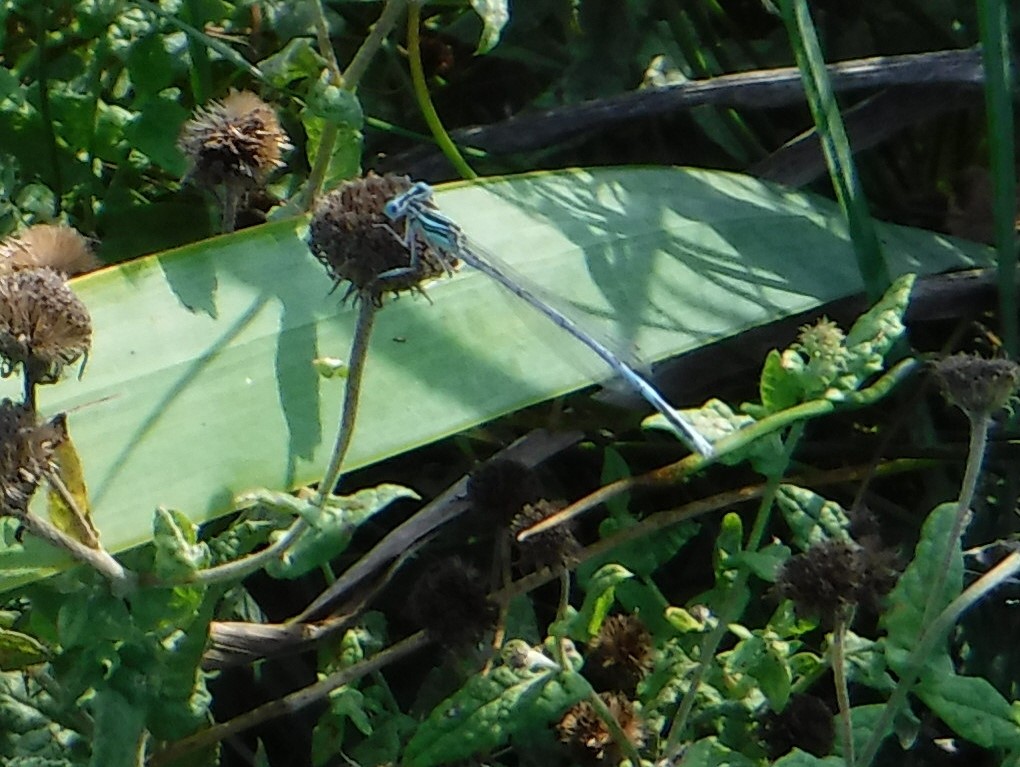
Total monthly rainfall was 39 mm with a maximum daily rainfall of 22 mm on 23rd September. Measurable rain fell on only 6 days of the month, and woodland ponds are at a very low water-level.
Maximum temperature on the warmest days was 23°C on the 3rd and 17th; the maximum temperature on the coldest day was 13°C on the 23rd. Overnight grass frost occurred on the 24th and 25thand strong winds occurred on the 11th (green leaf-fall), and 18th to 23rd, when leaves, large twigs, and small, thin branches came down.
-
 knotgrass moth caterpillar
knotgrass moth caterpillar
knotgrass moth caterpillar
knotgrass moth caterpillar
-
 small copper on water mint
small copper on water mint
small copper on water mint
small copper on water mint
-
 white legged damselfly
white legged damselfly
white legged damselfly
white legged damselfly
-
 willow emeral damselfy
willow emeral damselfy
willow emeral damselfy
willow emeral damselfy
https://www.kentfieldclub.org.uk/news/little-barton-farm-wildlife-notes/september-2018#sigProIda03bad116e
There was a shortage of first-sightings for the year, consisting of a knotgrass moth caterpillar on lake-side iris leaf (3rd), a pink-barred sallow moth among wildflowers (13th), a lunar underwing moth beneath porch light (22nd) and a square spot rustic on a lighted window frame on the 27th.
The majority of our observations for this month relate to the progress of autumn as indicated by our trees and shrubs. Ripe conkers were falling from the horse chestnut tree on September 2nd. Poplar leaves began falling on the 3rd, followed by field maple leaves on the 7th when we noticed the first signs of orange colouring on them. There was yellowing on some hornbeam leaves on the 8th, while leaves of the hornbeam, hawthorn, and silver birch fell quite strongly on the 11th. By the 12th dog rose, silver birch, and hazel leaves were turning yellow, and two days later, on the 14th, hawthorn leaves were turning orange, blackthorn were yellow, and wild cherry becoming red. Orange-coloured leaves began appearing on the horse chestnut on the 15th, while on the 21st some oak leaves were becoming yellow. At last, on the 28th, the horse chestnut began to shed its leaves.
As damselflies began to disappear for the year, the autumn batch of crane-flies emerged, initially only a few but rising to a vast number by the end of the month. The first damselfly to go was the red-eyed damselfly on the 2nd, followed by the blue-tailed damselfly (15th), emerald damselfly (16th), white-legged damselfly (21st), and willow emerald damselfly (27th). With the ruddy darter disappearing on the 19th, the only dragonflies probably left on site by the end of the month were the southern, brown, and migrant hawkers, and the common darter.
Butterflies suffered a similar decline, starting with the disappearance of the comma on the 3rd, the large white on the 7th, and the meadow brown on the 13th. We saw what may be the last green-veined white on the 21st, red admiral on the 26th, and small white on the 28th, although it is possible one or other of these may re-appear next month. The speckled wood (29th), small copper, and common blue (30th) may well continue into October.
A count of wildflowers still in bloom on September 30th produced the following list: Knapweed, fleabane, yarrow, white and red deadnettle, oxeye daisy, water mint, dandelion, rough hawkbit, red clover, redshank, and great willowherb. We are still also relentlessly dead-heading thistles and removing spiny oxtongue .

